Argentina, Kau Tapen Lodge; Another Day At The End Of The World
Barely recovered from a painfully short night’s sleep the guide team prepare our kit for another day on the water. The wind is surprisingly placid, blowing a gentle 15 mph. Those who have fished the mighty Rio Grande will understand this is rare. Initial small talk at the lodge is kept to a minimum as we are all keen to make the most of the excellent conditions. Minutes later, a line of guide trucks move down the hill from Kau Tapen Lodge to the main dirt track. I have Tim on board, a great character and follow Norfolk man. Together we meander through the maze of dirt tracks to Lilla’s, a beat made of a series of excellent pools and a personal favourite.
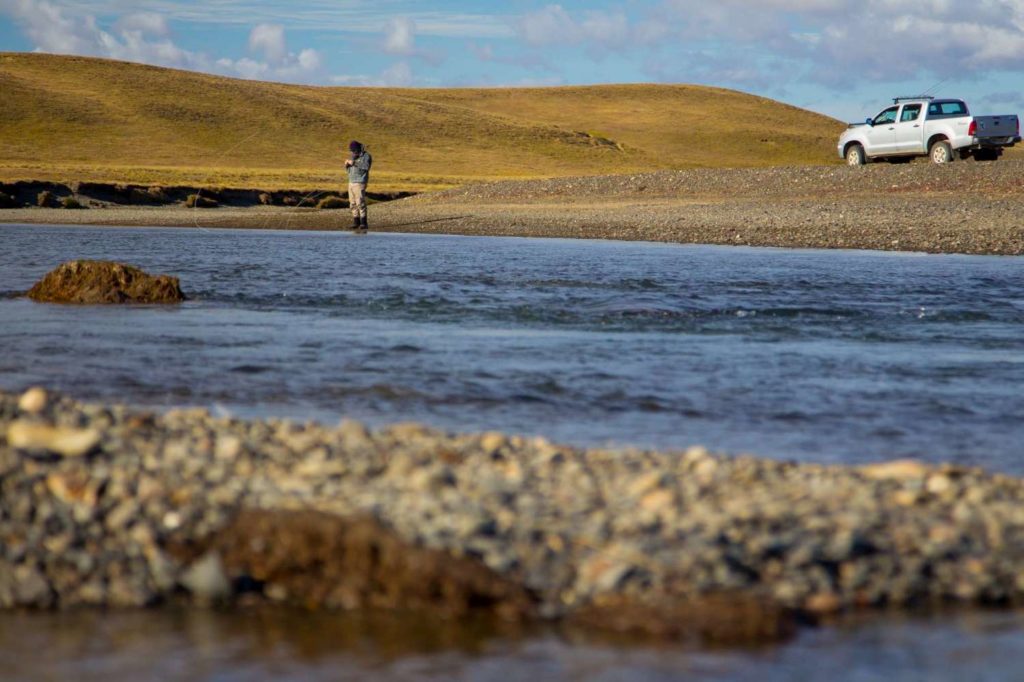
Given the milder conditions and lower water there seems little need to dredge to depths. I advise a ten foot intermediate poly leader and weighted size 12 rubber legs. A good tactic to start with and not too offensive. On the Rio Grande I always tend to err on the side of caution by starting smaller and shallower and the brought little interest move deeper and becomes more aggressive with my tactics.
Tim and I walk upstream on small stones to the head of Lilla’s pool, the largest and most productive on the beat. We keep a wide berth from the edge to make sure nothing lurking becomes aware of our presence. The pool looks in excellent condition and movement in the tail when we walk past confirms fish are present. Starting high in the faster water makes sure that we don’t miss any fish that may be moving through. At the head of Lilla’s the current hits the high bank before bending left and becoming the main run of the pool. Although the main stream of water is looking a little fast, the softer current on the inside is looking extremely fishy.
Tim is unrolling tidy loops which cover the water with ease, the only disturbance is the small plop his rubber legs makes as it meets the surface. He retrieves with short strips, broken by a small pause between each, just enough action to get the rubber legs kicking back and forth invitingly. After five minutes we are in softer holding water. The breeze on our back provides just enough cover to ripple the surface and disguise our presence. Sending another shallow angled cast the fly lands with a satisfying plop inches from the high bank.
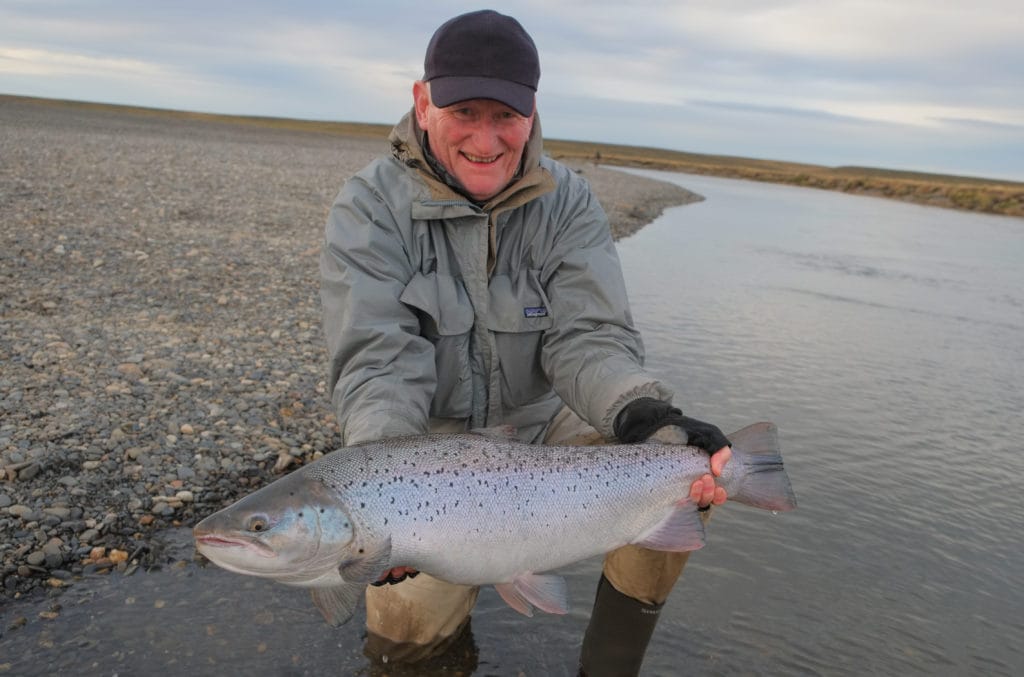
Tim guides the line across the pool and continues with his short sharp strips, through the faster water and into the softer current on our side. This time the line is plucked back. Clamping down and with a lowered rod the gentle plucks becomes increasingly aggressive. As he lifts, the rod bends deep, exposing the weight of a good sea trout. Feeling the pressure the fish cartwheels into the air, then slams back down with an almighty splash. The fish, still with plenty more juice starts to peel line off the reel. In a desperate bid to regain control and stop it wrapping around a clump, we follow.
Over the years, parts of the high bank have collapsed into the water to form huge clumps that lie subsurface like icebergs. When hooked, big fish often head straight for this sunken structure and if they find a way to wrap the line, its game over. Because of this, it can be important to keep a square angle to guide the fish away these snags and back to safer waters. This was one of those times. The sprint downstream has given Tim the opportunity to apply plenty of side pressure to try and salvage some control. Now the aggression had been dulled, Tim pulls harder to ease the bulk back to our bank. Spent from acrobatics, the fish slips obligingly into the net. Kneeling, we shake hands and admire the sixteen pound hen.
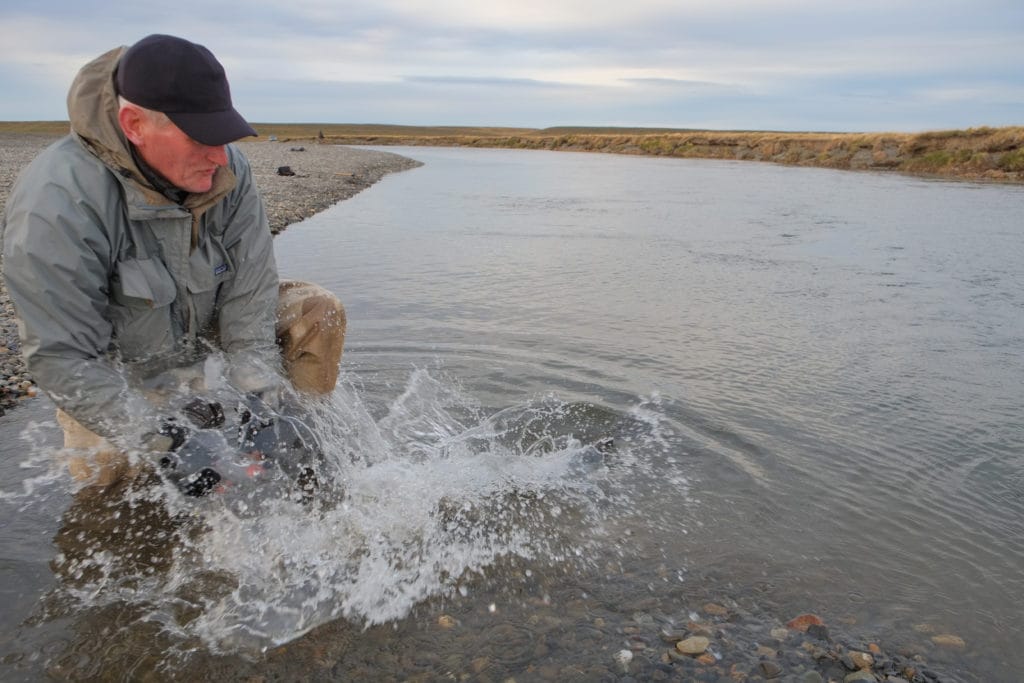
Now forty meters downstream from where the first fish was hooked, we slowly we walk on small stones back to where all the excitement started. There is little rush as it will be good to give the pool time to settle. I carefully check the leader and fly for signs of wear. One rubber leg has broken off so we re-tie with the same pattern, certainly no need to change. Twenty minutes pass before we move back to the faster water at the head.
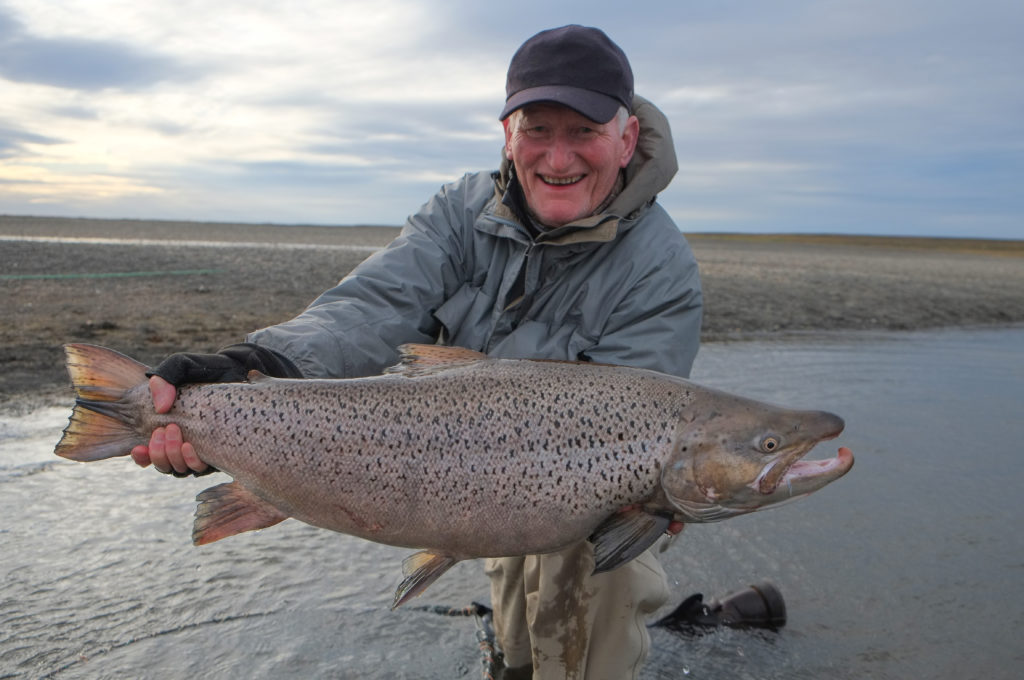
Angling the line downstream, Tim continues to plop the fly close to the far bank and work it back with small strips. In between swings we move downstream a meter at a time. A mere five minutes pass before the line draws tight once more, also when swinging through the smoother inside current. This time the take is less aggressive with the line momentarily stopping mid swing. The pause turns to a slow methodical draw of ever increasing pressure. With purpose and power the fish pulls line downstream. So far this is a very different fight to the first, more weight but less aggression. Now motionless, the fish holds its weight in the current, with patience Tim holds back. This game lasts for what feels painfully long until the fish swims upstream to the head of the pool. The heave ho continues until a seventeen pound bronzed cock lies resting in the shallows.
Happy and content we fish till lunch, the session continues with a steady trickle of smaller fish to keep us entertained. In truth, we are both satisfied, relaxed and ready for food.
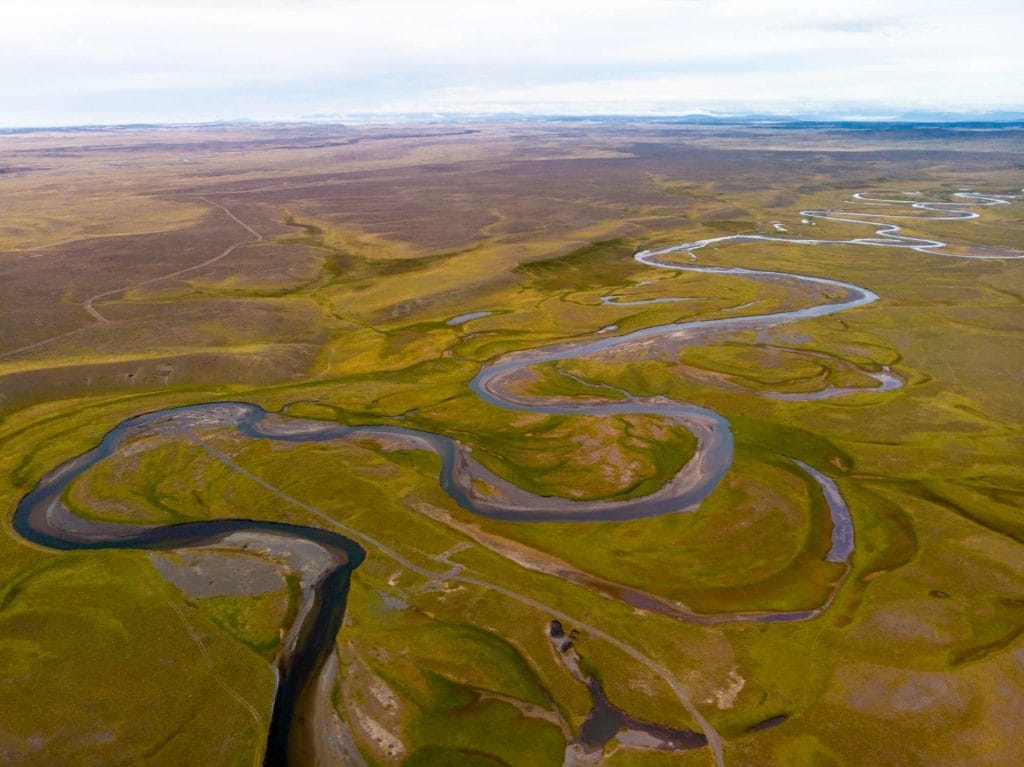
If you would like more information then please do not hesitate to contact Olly Thompson or call our office on +44(0)1980 847389.
About the author: Olly Thompson
